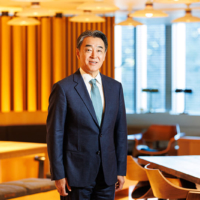This past week I tagged along with veteran New York Times food writer Elizabeth Andoh to Hakuun'an, a Buddhist vegetarian restaurant and teahouse associated with Manpukuji Temple near Uji City in Kyoto Prefecture. Manpukuji is the head temple of the Obaku sect of Zen Buddhism, Japan's third largest after the Rinzai and Soto sects, and is named after Manpukuji (Wafuszu) Temple in Fujian, China, where the sect's mid-17th-century founder, Ingen, was the abbot.
Along with Rinzai Buddhism, Ingen brought to Japan a more strict observance of Buddhist doctrine, including prohibitions on eating meat. The style of vegetarianism popular in Ingen's Ming Dynasty China -- called fucha ryori in Japanese -- predated today's comparatively modern shojin ryori temple food. Fucha, written with the characters "ordinary" and "tea," grew out of senchado, the practice of whole-leaf tea ceremony. Senchado uses leaf tea, sencha, rather than the more delicate, powdered tea, matcha, in an attempt to make tea available to everyone, rich or poor, educated or illiterate. The Obaku sect is one of the few in Japan practicing this type of tea ceremony and also still preparing the fucha ryori that goes with it.
The simplest traditional Japanese meal consists of one soup and three vegetables -- ichi-ju san-sai-- in addition to hot rice. A fucha meal consists of two soups and six vegetables -- Ni-ju roku-sai -- and is supposed to be eaten in groups of four people seated around a brightly lacquered, crimson table.

















With your current subscription plan you can comment on stories. However, before writing your first comment, please create a display name in the Profile section of your subscriber account page.